BEHIND THE SCENES WITH BOOTY ROBINS & BROAD KITTY
Two new bands are shaking up Kenyon’s music scene. (Photo gallery at the bottom of the page.)
12:19 a.m. — Broad Kitty looks a little pissed. It’s February, and the band is at Inaugural Ball, a Peeps O’ Kenyon party. Amanda Goodman ’18,
the lead singer and guitarist, is standing by the stage in the basement of Old Kenyon. Sydney Kapelus ’18, the group’s drummer, waits beside her, checking her phone.
Broad Kitty was supposed to play at midnight, but Shedding Velvet, another student group, is cutting into their set. (Broad Kitty’s bassist, Anna Fuller ’19, is in both bands. She is already in the corner of the stage, strumming her instrument.)
______________________
Kenyon may be a small school, but it has a fairly dedicated music scene, largely centered around the Horn Gallery, a student-run space that hosts both professional and local acts. Goodman, who used to perform solo, said it can be hard to get space in the scene as a woman. Last semester, her two male friends opened for more Horn acts than she did.
“They played a bunch of shows,” she said. “They opened two shows each on the same weekend. I remembered because I kept track of it.” The only shows Goodman opened for, she said, were on weekdays.
Later, Goodman wanted to perform at a concert hosted by the Kenyon Farm and was told she could not. At first the organizers said her music would be too loud, which made no sense, since a rock group was also scheduled to play, according to Goodman. Finally they gave her a different reason; they wanted to recreate a show they played earlier in the year — a show Goodman had not been included in, either.
Inaugural Ball will be Broad Kitty’s first public gig after forming at the beginning of the semester. When, at 12:21 a.m., Shedding Velvet vacates the stage, Goodman takes the mic.
“You motherfuckers better fucking stay,” she yells, “because there’s a girl band playing next.”

Photo by Nikki Anderson
The College’s most famous alumni musicians, who include members of the popular bands Pinegrove and Walk The Moon, are white and male; they play indie rock music, and are sometimes the subject of predictable scandals; in January, Pinegrove went on hiatus after issuing a statement on Facebook about alleged issues of sexual misconduct by frontman and Kenyon alumnus Evan Stephens Hall ’11.
Broad Kitty is one of two new student bands, formed this semester, that are changing what the Kenyon music scene looks like, and what audiences can expect when they go to concerts at venues like the Horn. The other band is Booty Robins, an eight-person jazz group that writes its own songs and wants people to get up and dance.
“The band scene at Kenyon is very indie, very angsty,” Austin Lichtenstein ’20, the group’s bassist, said.
Unlike many Kenyon bands, Booty Robins is a large group — large enough that, at one of their rehearsals, they have a conversation about whose number is whose in their group chat. On keyboard: Uli Schwendener ’21. Brian Sellers ’21 on electric guitar. Lichtenstein on bass. Max Lazarus ’20 on saxophone. Jesse Glass ’21 on drums. Laura Phillips ’20 and May Chen ’20 on vocals, as well as Jacob Adams ’19, who both sings and raps.
______________________
“Plan,” Lichtenstein writes on the whiteboard in Waite Rehearsal Hall. He jots down a list.
The plan, apparently, is this:
· FUNK
· GROOVE
· STANK
· UHUURNAMEEN
(That last one yielded zero Google search results. The members said later it is a slurred "You heard what I mean?") Letting loose and embracing fun is part of the band’s spirit. There is no real plan, nor any formal start to this rehearsal. As the members trickle in, each joins in on the sound, smiling as they play.
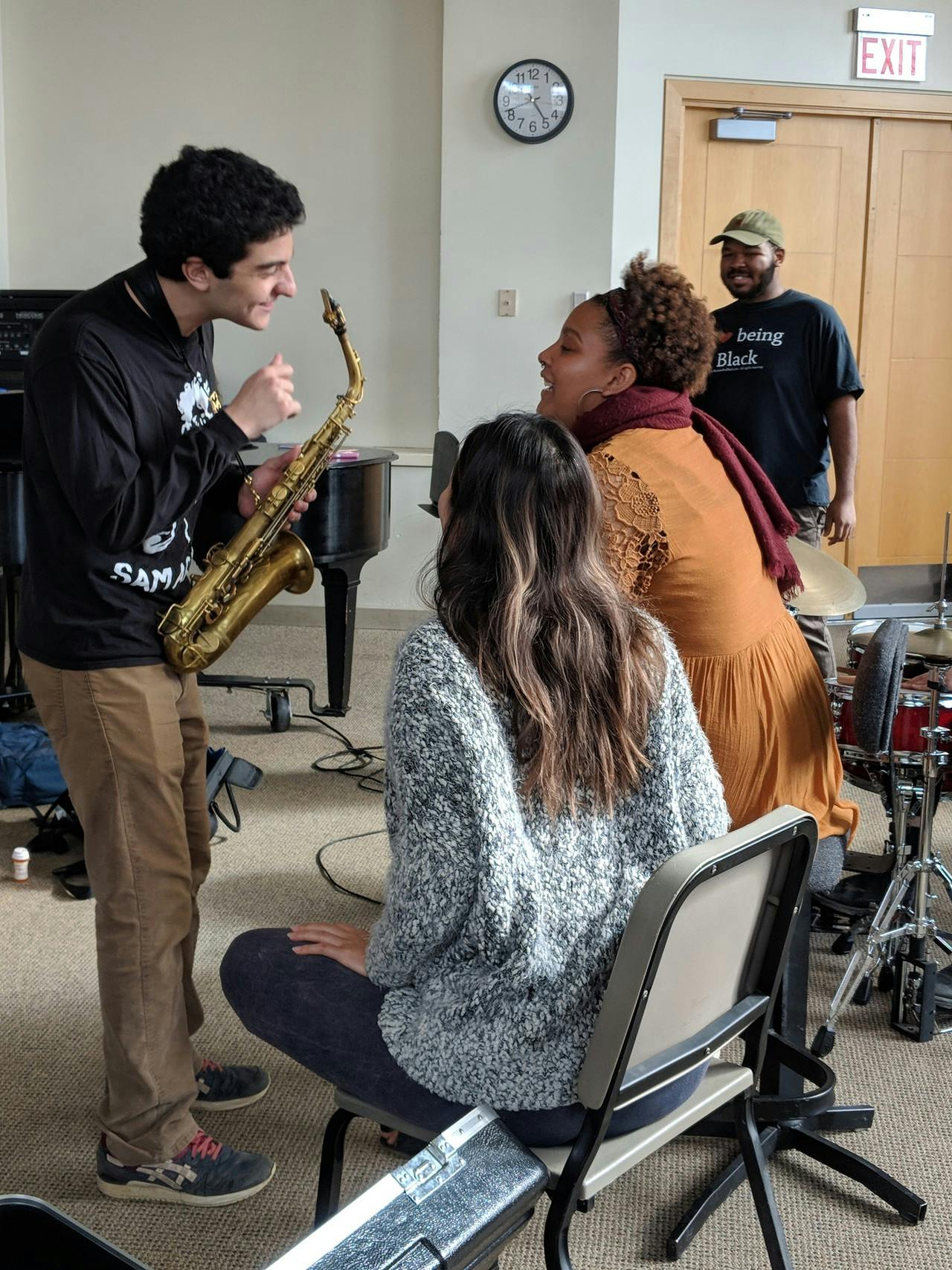
Photo by Frances Saux
“We’re gonna have some fun, we’re gonna have some fun tonight,” Adams sings, before he starts scatting.
Later he belts, “Now play the keys! Now play the keys!” as Schwendener embarks on a fast one-handed solo.
“Bring that soul out!” Adams instructs Lazarus.
Lazarus is the one who brought them all together. Some of the members played together last semester under a prototypic version of the band, according to Lazarus, but this semester, they started working more seriously. They write all their own songs collaboratively. Usually, one person will bring in chords, and the rest of them will build off of these.
After one of their first shows, a friend came up to Sellers and remarked that it was the first time they had been to a concert where no one was self-conscious, Sellers said.
______________________
Onstage at Inaugural Ball, Broad Kitty goes through its set. Goodman is in a pink wig and black fishnet getup; Kapelus wears a black baseball cap, and Fuller wears a long, green coat. Their high-energy songs, written by Goodman, are all called things like “Response to Being Your Manic Pixie Dream Girl” and “Don’t Come For Me.”

Photo by Nikki Anderson
The room is dancing, head-banging. People seem into it. Still, Goodman isn’t afraid to yell at them when she senses she’s lost their attention. “You better fucking listen to this song,” she says, mid-way through.
The day before the show, Broad Kitty works on material in the practice room of the Horn. All three members contribute, but you can tell it’s Goodman’s project at heart. They’re her lyrics, her vibe: There is a retro quality to Goodman’s particular brand of no-nonsense, unapologetic punk. It’s familiar material for those who know the Riot Grrrl tradition of the nineties — a movement Goodman said she is both inspired by and critical of for its exclusion of certain identities.
The tempos are upbeat; lyrics like “If I’m a bitch it’s ’cause I mirror back your insecurities” and “I want that girl in my pocket, want that girl in my sheets” reject the male gaze and prioritize female desire and independence.
Plus, in each song there is a point of no return, a moment where dreamy opening notes morph into a pointed energy that carries the track to the end, transforming what you think is going to be a calm ballad into bona fide mosh pit music by girls who won’t let anyone mess with them any longer.
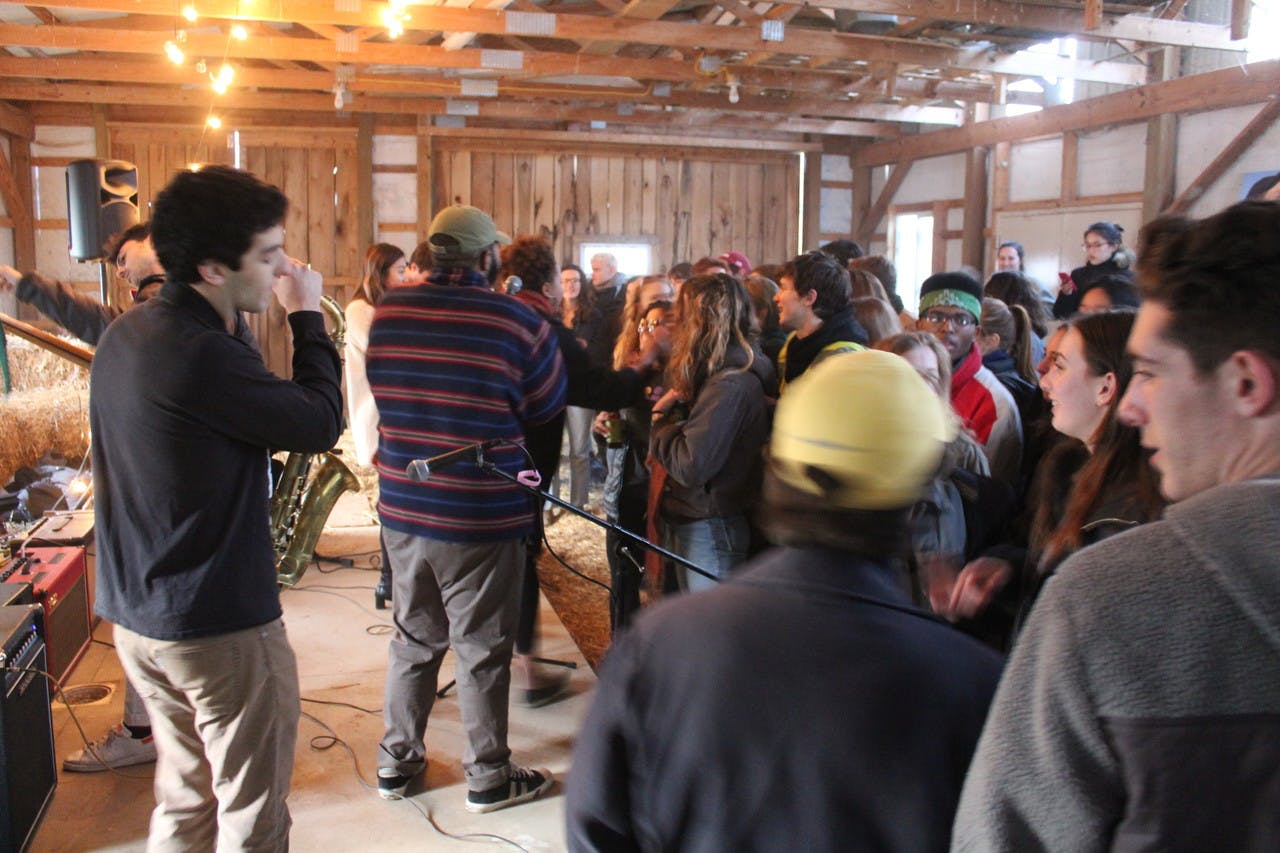
Photo by Dan Nolan
In the middle of Booty Robins’ rehearsal, Lazarus interrupts the other members. “Wait,” he says. “I think it can be a lot better.”
Adams takes the opportunity to ask the group, “Also I made up those lyrics, how do you feel about it?”
It’s surprising to listen to them play, then find out later they’ve been making it all up as they go. When Glass asks Lazarus, “What do you want to change?” Lazarus says, “You’re already thinking about it too hard.”
______________________
Adams points out that, compared to Kenyon as a whole, “this is a very diverse group, coming from very diverse backgrounds.” Lichtenstein added that it is important to have a racially diverse mix when playing jazz music, which comes from the black diaspora.
It is interesting, listening to the members of both bands talk about music at Kenyon. It’s a subculture they are all deeply immersed in, and yet the kinds of criticisms they give are the same criticisms you are likely to hear from people who avoid that scene: that it is homogenous; that the acts generally sound the same; that everybody involved knows the same music, and the same students always play.
Fuller has been a member of Shedding Velvet since her first year at Kenyon, and she considers it her “main band.” But she said she has also worried it would become the kind of group that accidentally dominates the student music scene — the kind that plays at every show, the kind audiences get bored of hearing.
______________________
In the dimly-lit Horn, one Friday night in late March, Goodman grabs the mic. “I’m really excited for tonight,” she says.
Goodman has organized a “Femme Music Show” intended to spotlight woman performers. The idea came to her last semester. “I’m just gonna not let other people dictate who gets to use the space anymore,” she said. She reached out to student musicians, targeting “anyone
who’s not a white man.”
Goodman emcees, and the vibe is goofy, the room ripe with a feeling of camaraderie. When the first performer, Anjelica Carroll ’19, admits she has forgotten the lyrics to her own song, everyone cheers her on.
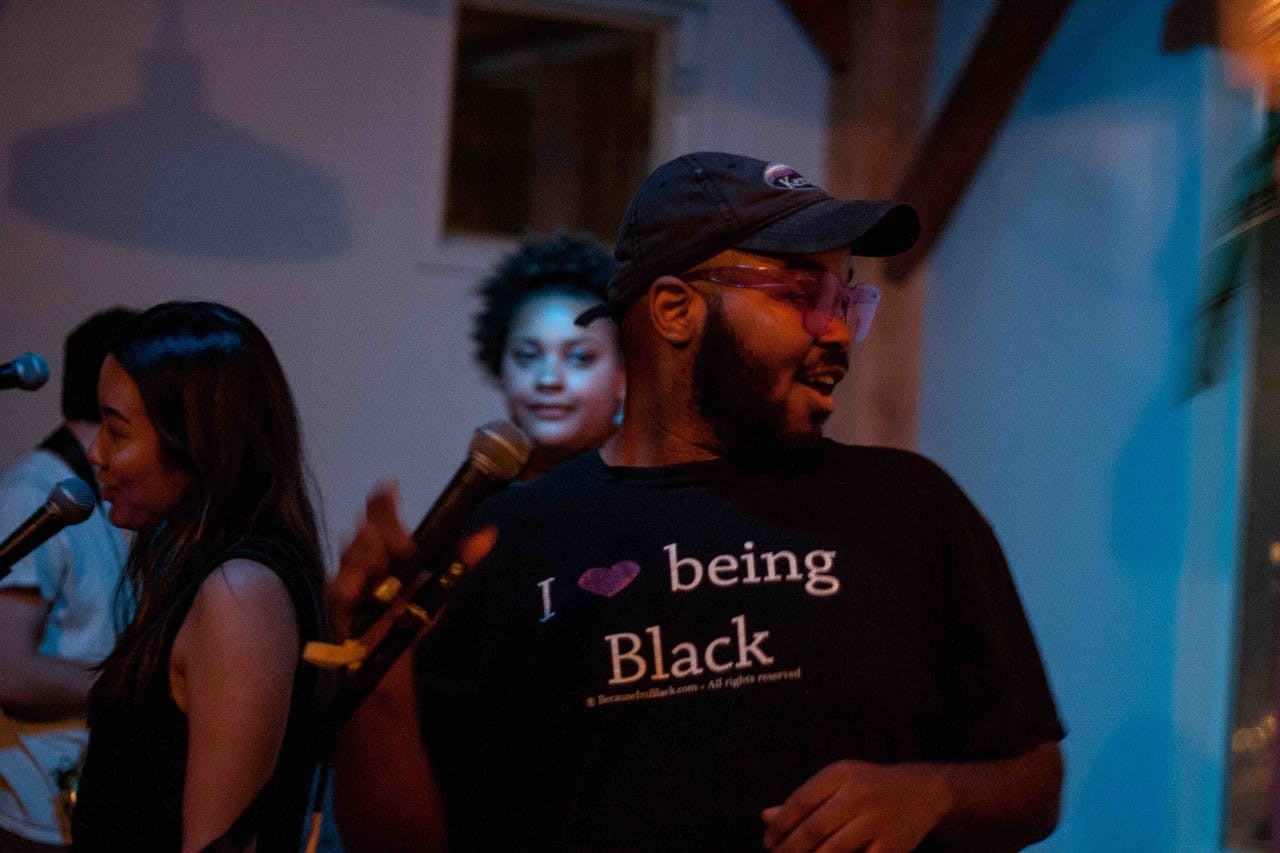
Photo by Eryn Powell
Halfway through the show, Booty Robins takes the stage, and the crowd starts to move.
This is how Booty Robins’ shows tend to go. In April, at the Farm’s annual Goat Roast, Phillips tells the audience to get up from their seats. If they don’t dance, they’ll get cold, she says. People are reluctant to stand at first. But, by the end of the first song, the audience is perched on hay bales, participating in a call-and-response of the word “booty.”
______________________
The futures of both bands are unclear; the sophomores in Booty Robins will go abroad next year, and Broad Kitty’s Kapelus and Goodman graduate in May. For now, though, the bands share the same goal. “Our plan is to keep making music,” Phillips said, “and share it with the entire campus.” ■

Photo by Eryn Powell
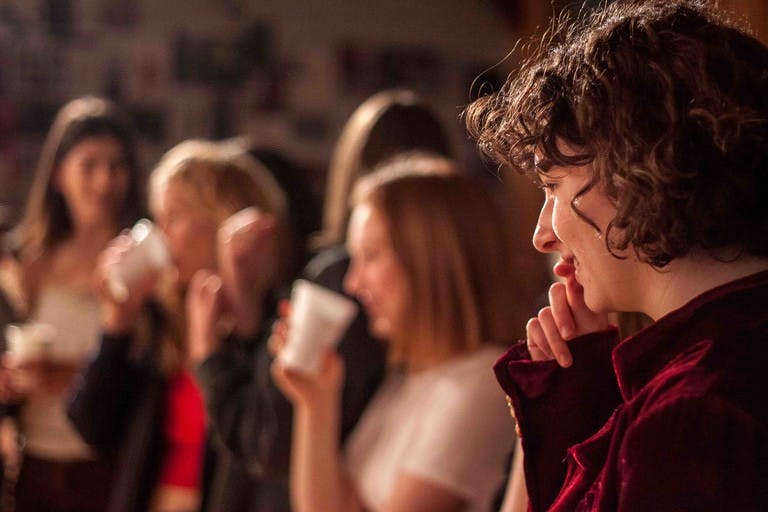
Photo by Eryn Powell
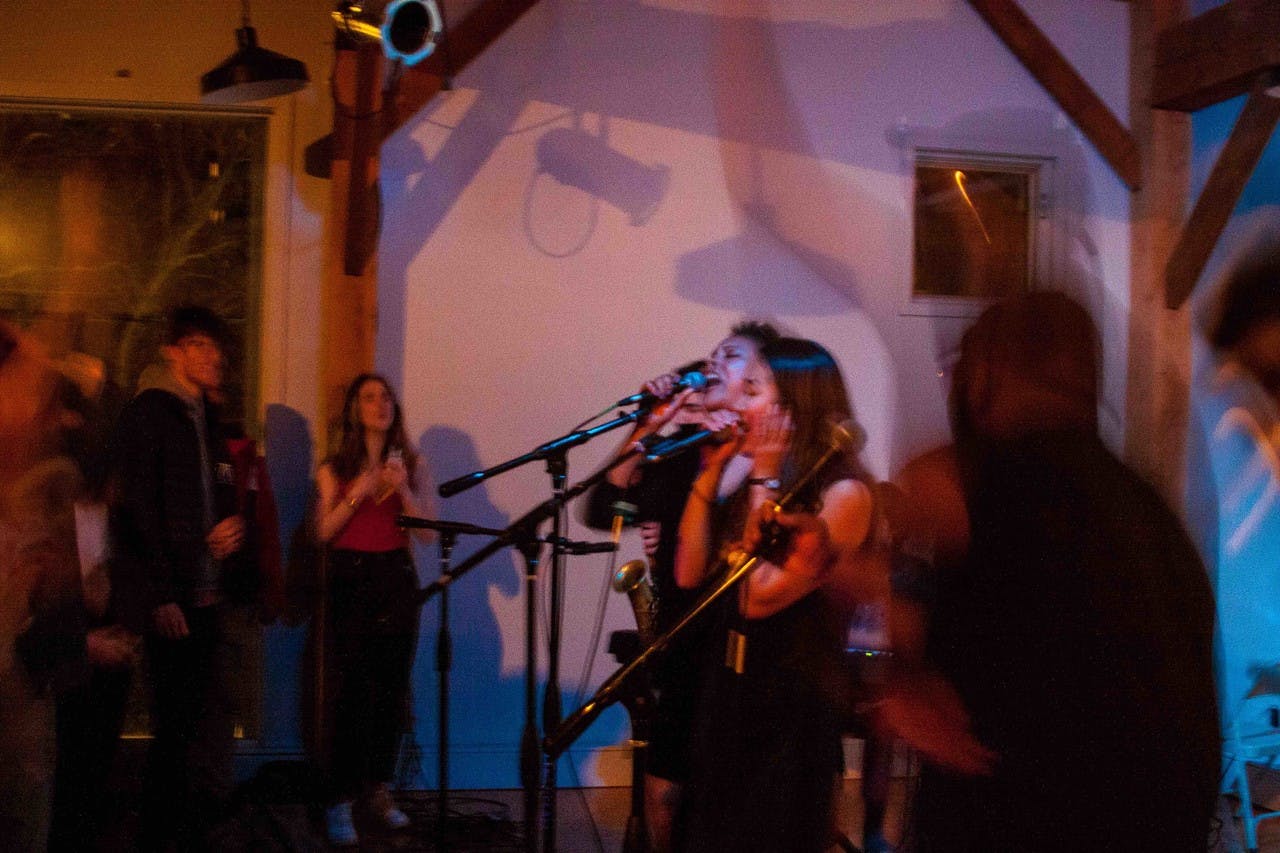
Photo by Eryn Powell
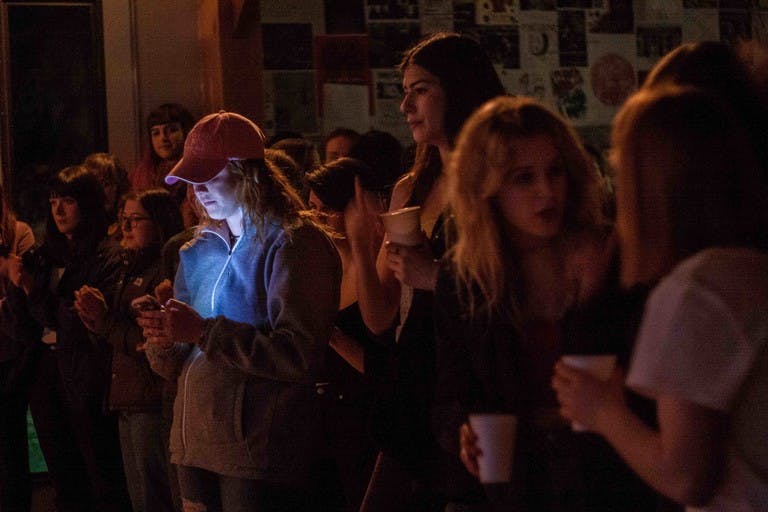
Photo by Eryn Powell
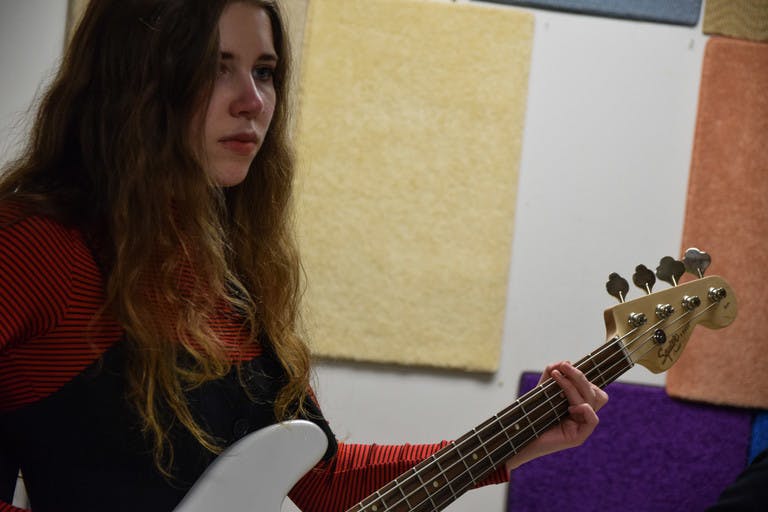
Photo by Nikki Anderson
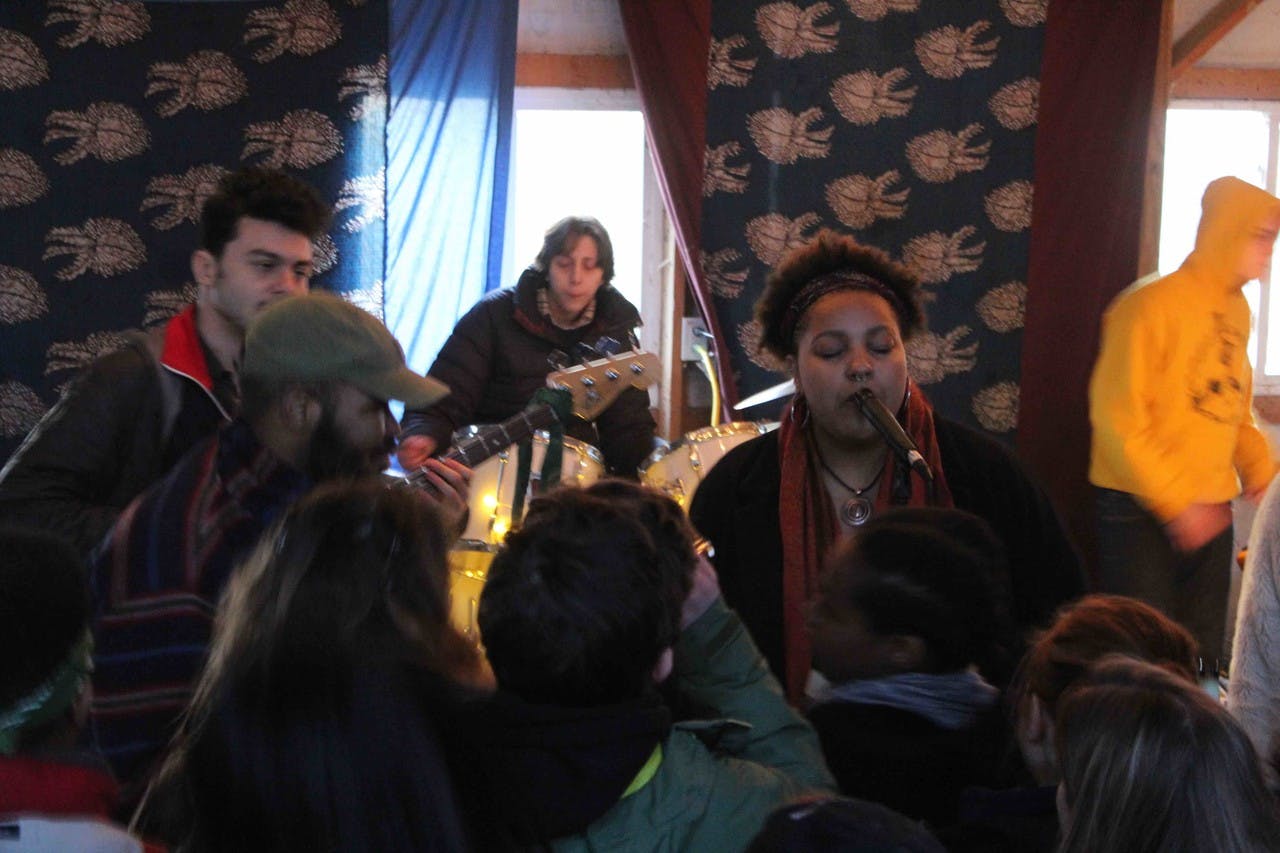
Photo by Dan Nolan
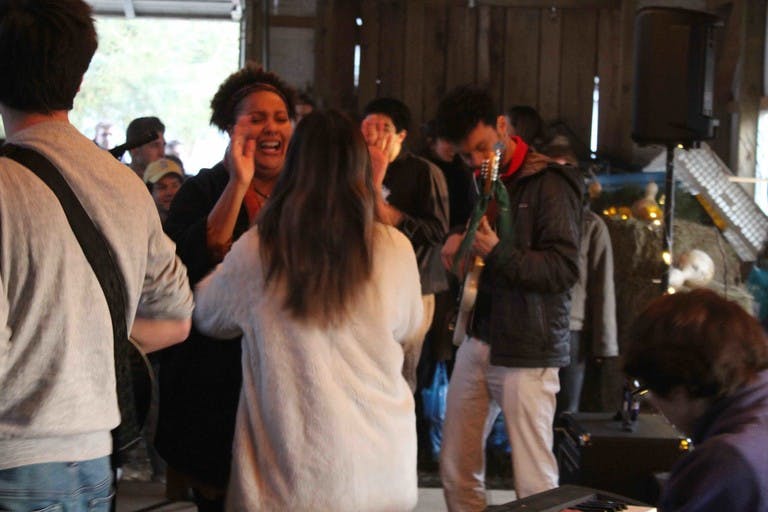
Photo by Dan Nolan

Photo by Frances Saux
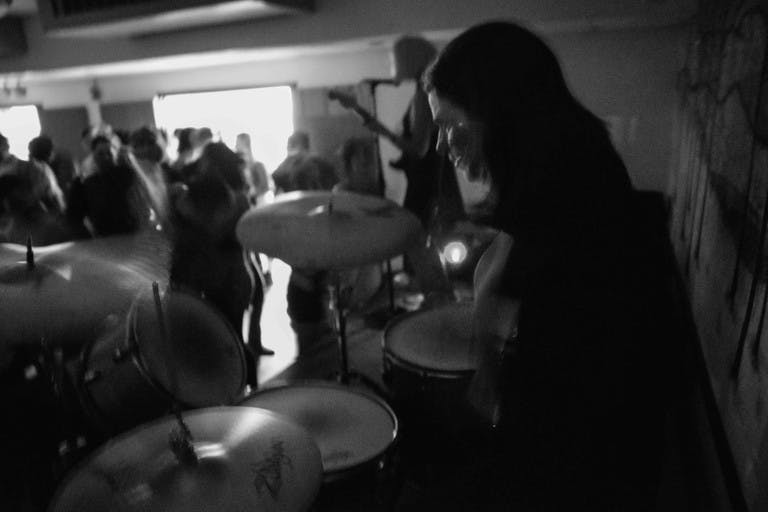
Photo by Nikki Anderson
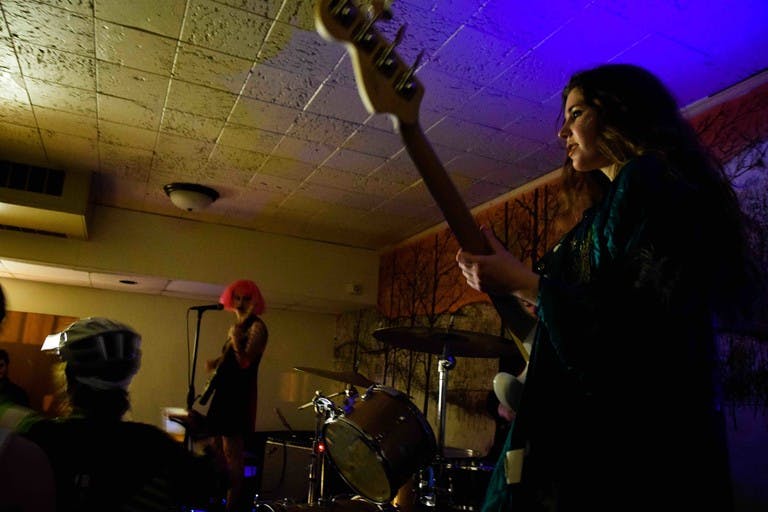
Photo by Nikki Anderson
